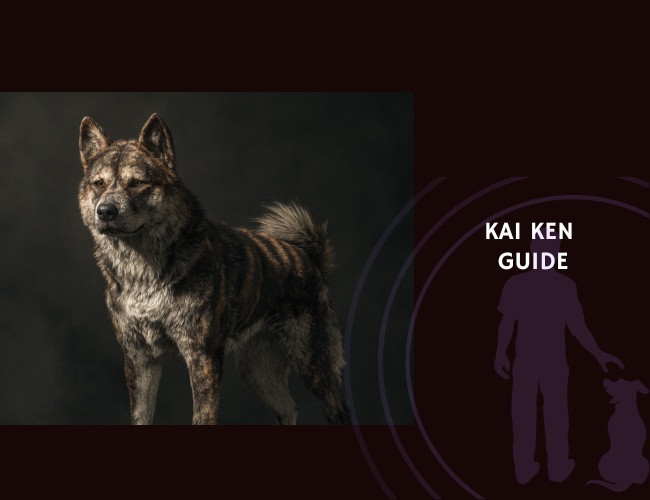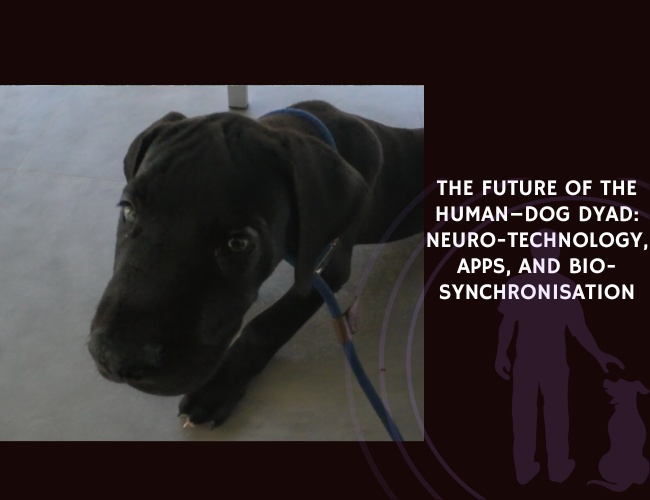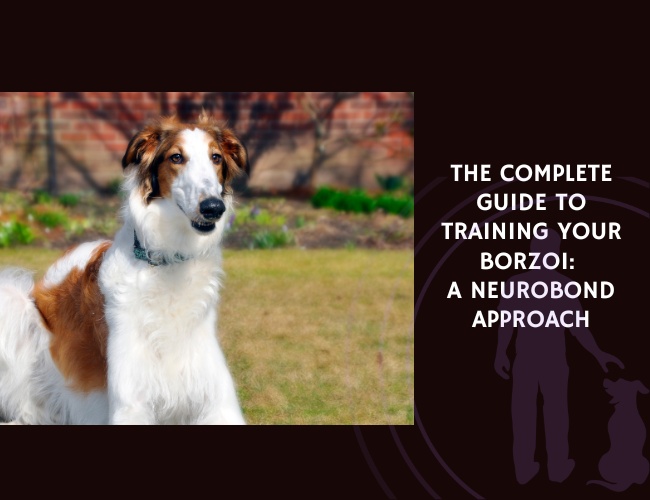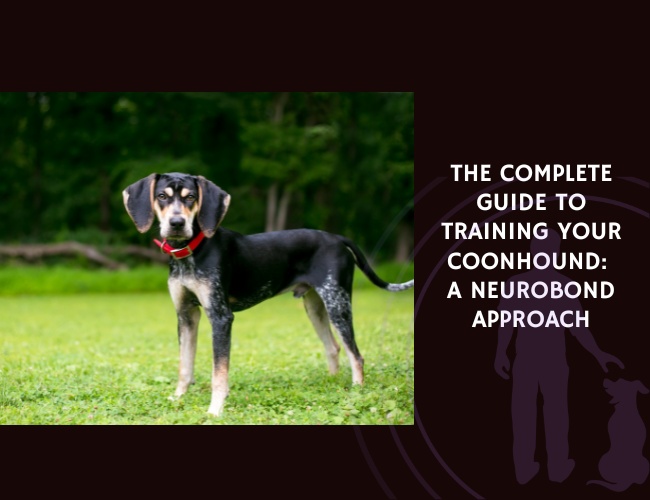Hidden in the mountainous regions of Japan lives one of the world’s rarest and purest dog breeds – the Kai Ken. Known affectionately as the “Tiger Dog” for its distinctive brindle coat that ripples like sunlight through forest shadows, this remarkable breed represents over 3,000 years of natural evolution and careful preservation. With only 12,000-14,000 individuals worldwide, welcoming a Kai Ken into your life means becoming a guardian of living history. Let us guide you through understanding this extraordinary companion who embodies the Japanese expression “one master for life” with unmatched devotion.
Introduction: Meeting Japan’s Mountain Hunter
Picture a dog scaling a tree with the agility of a cat, swimming through mountain streams with unwavering determination, and tracking prey across steep terrain that would challenge even experienced mountaineers. You’re imagining the Kai Ken, one of Japan’s six native breeds and arguably its purest genetic treasure. Designated as a Living Natural Monument in 1933, these medium-sized hunters evolved in splendid isolation in Yamanashi Prefecture, near the majestic Mount Fuji.
What makes the Kai Ken truly special isn’t just their rarity or their ninja-like climbing abilities – it’s their profound capacity for loyalty that runs deeper than most breeds you’ll encounter. When Kai Ken owners speak of their dogs, you’ll notice a particular reverence in their voice, an understanding that they’ve been chosen by something extraordinary. This breed doesn’t just live with you; they become an integral part of your life’s journey, forming bonds so strong that switching owners can cause genuine emotional distress to these sensitive souls.
Character & Behavior: Understanding Your Tiger Dog’s Heart
The Hunter’s Heritage That Shapes Today’s Companion
Your Kai Ken carries within them the legacy of ancient Japanese hunters who relied on these dogs to track everything from pheasants to bears across treacherous mountain terrain. This isn’t just historical trivia – it’s the key to understanding why your furry friend might suddenly freeze during a walk, nose quivering as they process scents you can’t even imagine, or why they can effortlessly scale that six-foot fence you thought was adequate.
The hunting instinct manifests in fascinating ways:
- Your Kai Ken possesses climbing abilities that seem to defy canine physics – they’re literally capable of scaling trees, walls, and fences like four-legged ninjas
- Swimming comes as naturally to them as breathing, a skill honed through generations of crossing mountain streams in pursuit of prey
- Their scenting abilities remain remarkably intact, allowing them to track with precision that would impress professional search teams
- That alert, focused expression you’ll see isn’t stubbornness – it’s centuries of breeding for independent decision-making in dangerous terrain
Did you know that historically, there were two distinct types of Kai Ken? The shishi-inu-gata was stockier with a bear-like face, while the shika-inu-gata was leaner and fox-faced, specialized for deer hunting. Though modern breeding no longer distinguishes between these types, you might notice traits from both lineages in your companion.
The Temperament Puzzle: Primitive Yet Devoted
Understanding your Kai Ken’s temperament requires appreciating a beautiful contradiction – they’re simultaneously wild and devoted, independent and clingy, aloof and affectionate. This complexity isn’t a flaw; it’s what makes them such remarkable companions for those who truly understand them.
Your Kai Ken’s emotional landscape includes:
- An almost overwhelming loyalty to their chosen family, particularly their primary caregiver
- Natural wariness of strangers that requires patience and proper introductions
- A calm, almost zen-like demeanor indoors that transforms into energetic enthusiasm outdoors
- Intelligence paired with independence – they’re smart enough to learn quickly and independent enough to decide whether your command is worth following
The phrase “one master for life” isn’t just romantic language – it’s a biological reality for these dogs. Your Kai Ken will form an attachment to you that transcends typical dog-owner relationships. This means that while your neighbor’s Golden Retriever might happily accept treats from anyone, your Kai Ken will politely decline, waiting for your approval first. It’s not unfriendliness; it’s discernment born from thousands of years of selective bonding.
Social Dynamics: Your Dog’s Relationship Map
Unlike their more aloof Japanese cousins, Kai Ken were regularly hunted in packs, making them surprisingly social with other dogs – when properly introduced. You’ll notice your Kai Ken tends to choose flight over fight in conflicts, a trait that speaks to their intelligence and self-preservation instincts.
With other dogs, your Kai Ken will likely maintain a neutral, observant stance initially. They’re not the types to bound up to every dog at the park with tail wagging. Instead, they assess, evaluate, and then decide whether this new acquaintance is worth their time. Once they’ve accepted another dog, however, they can form lasting friendships.
With your family, expect to see different relationship dynamics emerge. While they’ll love all family members, most Kai Ken develop a special bond with one person – usually whoever spends the most time training and caring for them. Children who respect boundaries will find a patient, protective friend in a Kai Ken, though the breed’s primitive traits mean supervision is always necessary with young ones.
The prey drive consideration is where you’ll need to be most vigilant. That adorable hamster? Your Kai Ken sees a snack. The neighbor’s cat? A fascinating chase opportunity. This isn’t aggression – it’s hardwired hunting instinct that no amount of training will completely eliminate, only manage.
Training & Education: Partnering With Your Independent Thinker
The Critical Socialization Window You Can’t Miss
Here’s a truth that might feel overwhelming: your Kai Ken puppy’s future temperament is largely determined by what happens between 3 and 14 weeks of age. Miss this window, and you might find yourself with a dog who reverts to primitive, wild behaviors that make modern life challenging. But don’t worry – we’ll guide you through making the most of this crucial period.
During those precious early weeks, your puppy needs exposure to:
- At least 100 different people of various ages, ethnicities, and appearances
- Multiple dog breeds and sizes in controlled, positive settings
- Urban environments with their cacophony of sounds, smells, and sights
- Handling that mimics grooming, veterinary exams, and daily care
- Various surfaces from grass to gravel, carpet to concrete
But here’s what makes Kai Ken unique – unlike many breeds where socialization can taper off after puppyhood, your Kai Ken requires continuous socialization throughout their entire life. Think of it like maintaining a language you’ve learned; without practice, the skills fade. You might notice your well-socialized adolescent Kai Ken suddenly becoming skittish around strangers again. This isn’t failure; it’s their primitive nature reasserting itself, reminding you that socialization is a lifelong commitment with this breed.
Working With, Not Against, That Fierce Intelligence
“Kai Ken and all Japanese dogs are very intelligent,” experienced owners will tell you, “so intelligent that they know that listening to you saying ‘come’ is not going to be more interesting than sniffing the mailbox that 20 dogs have peed on since yesterday.” This perfectly captures the training challenge – and opportunity – these dogs present.
Your Kai Ken learns quickly, often understanding new commands in just a few repetitions. The challenge isn’t teaching them; it’s motivating them to comply consistently. They’re independent thinkers who evaluate whether your request makes sense in the current context. This means harsh training methods aren’t just ineffective – they’re counterproductive, potentially damaging the trust that’s essential for any training success.
Effective training strategies that work with your Kai Ken’s nature:
- Keep sessions short (5-15 minutes) but frequent
- Use high-value rewards that change regularly to maintain interest
- Build training into daily life rather than formal sessions
- Accept that some days, your dog will test boundaries – it’s not defiance, it’s intelligence
- Focus on partnership and communication rather than dominance
The Off-Leash Question: Managing Realistic Expectations
Let’s address the elephant in the room – or rather, the tiger dog who won’t come back when called. Due to their strong hunting drive, most Kai Ken should never be considered reliable off-leash in unfenced areas. Yes, you might meet that one owner whose Kai Ken has perfect recall, but they’ve likely invested hundreds of hours into training and proofing that behavior.
Your Kai Ken’s prey drive can override even the strongest training when a squirrel darts across their path. This isn’t a training failure; it’s biological imperative. Instead of fighting this nature, work with it:
- Use long-lines to give controlled freedom
- Find secure, fenced areas for off-leash play
- Channel hunting instincts into structured activities like scent work
- Build an emergency recall that’s different from everyday commands
- Accept that some limitations are for your dog’s safety

Nutritional Recommendations: Fueling Your Mountain Athlete
Understanding Your Kai Ken’s Unique Dietary Needs
Your Kai Ken’s nutritional needs reflect both their Japanese heritage and their athletic build. Interestingly, Nihon Ken (Japanese dogs) tend to have an issue with bile vomiting, which experts believe stems from their ancestral diet in Japan that included significant carbohydrates from rice and wheat. This means your modern Kai Ken might actually benefit from adequate complex carbohydrates, contrary to the current “grain-free” trend.
Protein considerations for different life stages:
- Puppies (4 weeks to 9 months): Should eat All Life Stages foods at 22-24% protein – higher levels can cause growth issues
- Maturing dogs (10 months+): Can handle up to 32% protein, though lower levels are often better
- Active adults: Need approximately 1.5g protein per kg of lean muscle mass
- Seniors: May benefit from slightly reduced protein if kidney concerns arise
You might notice your Kai Ken has a more sensitive stomach than other breeds. Protein sensitivity toward chicken and turkey seems more common than grain allergies, with many Kai Ken thriving on fish-based diets (considered a “cooling protein” in traditional Japanese veterinary medicine).
The Bile Vomiting Mystery and How to Solve It
If you wake up to find yellow bile on your floor, don’t panic – you’re experiencing one of the breed’s quirks. This tends to happen when their stomach is empty for too long, and the solution is surprisingly simple:
- Divide daily food into multiple smaller meals
- Offer a small evening snack before bed
- Consider adding complex carbohydrates if on a very low-carb diet
- Keep feeding times consistent to regulate digestive rhythm
Supporting That Beautiful Brindle Coat
Your Kai Ken’s distinctive tiger-striped coat requires specific nutritional support to maintain its health and luster. During the twice-yearly “coat blow” when they shed their undercoat, you’ll be amazed at the amount of fur one medium-sized dog can produce. Proper nutrition can make this process smoother:
Essential nutrients for coat health:
- High-quality protein provides the building blocks for healthy fur
- Omega-3 and Omega-6 fatty acids in the proper ratio (roughly 1:4) support skin health
- Biotin and zinc prevent dry, flaky skin
- Vitamin E adds shine and helps with seasonal shedding
- Adequate hydration keeps skin elastic and healthy
Health Concerns: Protecting Your Rare Companion
The Reality Check About Kai Ken Health
“To put it simply,” admits one experienced breeder, “Kai Ken are not what I would describe as a ‘healthy’ breed. There are a lot of issues in the breed that unfortunately we don’t fully understand or can’t find the root of because of lack of testing.” This honest assessment shouldn’t scare you away, but it should prepare you for proactive health management.
The small global population means limited genetic diversity, which can concentrate certain health issues. However, with proper screening, preventive care, and early intervention, most Kai Ken live happy, healthy lives spanning 12-16 years.
Primary Health Concerns to Monitor
Seizures have been noted in quite a few Kai Ken, though the genetic basis isn’t fully understood. If your dog experiences a seizure:
- Stay calm and time the episode
- Keep them away from stairs or furniture they could hurt themselves on
- Don’t try to hold their tongue or put anything in their mouth
- Document everything for your veterinarian
- Understand that many dogs with managed epilepsy live normal lives
Progressive Retinal Atrophy (PRA) affects the breed in two testable forms. This genetic condition causes gradual vision loss, typically starting around 3-5 years of age. While there’s no cure, dogs adapt remarkably well to vision loss, and genetic testing can prevent passing it to future generations.
Hip dysplasia, while not as common as in larger breeds, does occur. You can reduce risk by:
- Selecting puppies from tested parents
- Maintaining optimal weight throughout life
- Avoiding high-impact exercise during puppyhood
- Providing joint supplements as your dog ages
Creating a Preventive Health Strategy
Your Kai Ken’s health management should be proactive rather than reactive. Establish a relationship with a veterinarian who understands primitive breeds and their unique needs. Regular health screening should include:
- Annual eye examinations
- Hip and elbow evaluations at 2 years
- Regular blood work to establish baselines
- Genetic testing for PRA
- Cardiac evaluation as they age
Loyal. Wild. True.
Heritage in every step. The Kai Ken’s hunting legacy shapes their keen senses, agility, and independent decision-making. Understanding this instinct turns challenge into partnership.
One bond for life. These dogs choose their person with unmatched devotion, forming an attachment that demands trust, respect, and consistency above all else.
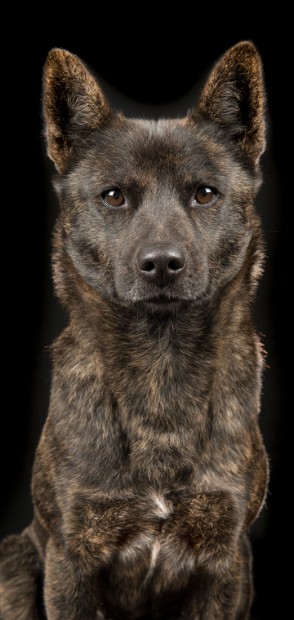
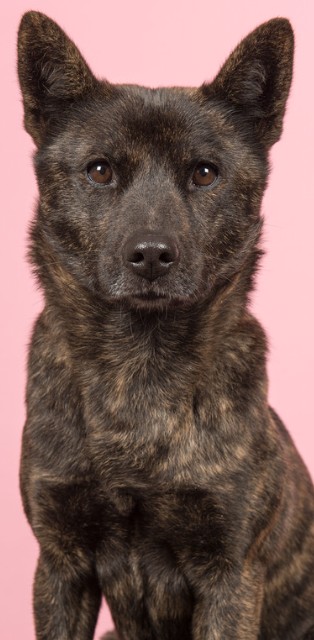
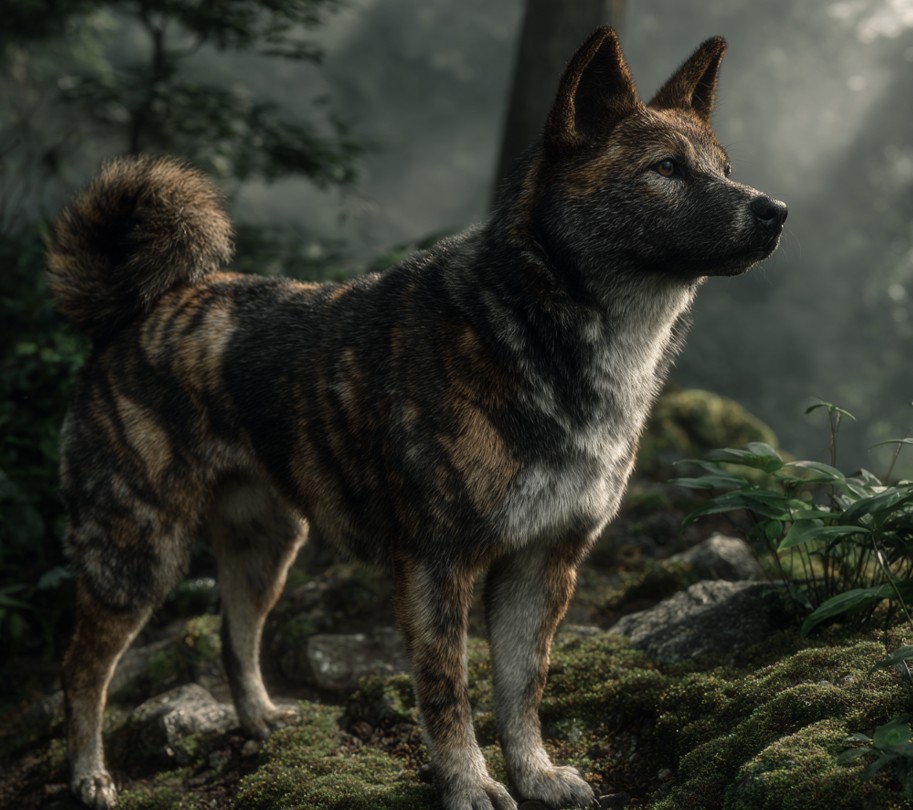
Early guidance shapes destiny. Timely, positive socialization channels their primitive nature into confident adaptability, creating a rare companion who thrives in both family life and the wider world.
Lifestyle & Environment: Creating Your Kai Ken’s Perfect World
Exercise: Meeting the Needs of a Mountain Athlete
Kai Ken are mid-range hunting dogs, meaning they historically covered considerable distance while hunting. This translates to significant exercise needs in modern life – but perhaps not in the way you’d expect. Your Kai Ken doesn’t need marathon running sessions; they need varied, engaging activity that stimulates both body and mind.
The ideal exercise program looks like:
- Morning walk (20-30 minutes): A calm, sniff-focused exploration to start the day
- Midday mental enrichment (15 minutes): Puzzle toys, training, or scent games
- Evening activity (30-40 minutes): More active play, training, or walking
- Weekend adventures: Hiking, swimming, or exploring new environments
Remember, a daily walk of at least 30 minutes is crucial for their health and well-being, but it’s the quality of exercise that matters more than quantity. Your Kai Ken would rather have three interesting 20-minute walks than one boring hour-long march around the same block.
Environmental Considerations: City, Suburbs, or Country?
Rural settings provide the ideal environment for Kai Ken. Here, they can express natural behaviors safely, enjoy varied terrain, and experience less stress from urban stimuli. If you have acreage, your Kai Ken will thrive – though remember, even in the country, that fence needs to be at least 6 feet high and possibly topped with coyote rollers to prevent climbing escapes.
Suburban environments work well with committed owners. A fenced yard becomes your dog’s kingdom, a place where they can patrol, explore, and relax. The suburbs often offer a good balance of space and socialization opportunities, though you’ll need to be mindful of their reaction to delivery people, joggers, and other suburban stimuli.
Urban apartment living is possible – yes, really! With the right amount of exercise and mental stimulation, Kai Ken can adapt to apartment living. The key is dedication: multiple daily walks, creative indoor enrichment, and possibly doggy daycare for socialization. You’ll need to work on elevator training, managing their reaction to hallway noises, and ensuring they get enough physical activity despite space constraints.
Climate Adaptation: From Mountain Snow to City Heat
Your Kai Ken’s double coat is a marvel of natural engineering, designed for Japan’s varied mountain climate. In cold weather, they’re in their element – many owners report their Kai Ken choosing to sleep outside in the snow, perfectly content while their humans shiver at the window.
Heat requires more management. While they can adapt to warmer climates, you’ll need to:
- Adjust exercise times to cooler morning and evening hours
- Ensure constant access to fresh water and shade
- Never leave them in cars, even briefly
- Consider cooling mats or air conditioning during extreme heat
- Be aware that their dark brindle coat absorbs heat quickly
Family Integration: Building Bonds That Last
“Yes, Kai Ken are very friendly with children of all ages and love playing new games and learning tricks which your kids can surely do,” shares one family owner. However, this friendliness comes with important caveats. Your Kai Ken won’t be like the neighborhood Golden Retriever who loves all children immediately. Instead, they’ll be devoted to YOUR children while remaining reserved with visitors.
Creating successful child-dog relationships requires:
- Teaching children to respect the dog’s space and signals
- Involving kids in training and care routines
- Supervising all interactions, especially with young children
- Establishing dog-free zones where your Kai Ken can retreat
- Understanding that your dog may be protective without being aggressive
The family dynamics with a Kai Ken are fascinating to observe. They’ll participate in family activities with enthusiasm, often positioning themselves where they can watch everyone. You might notice your Kai Ken “counting” family members on walks, showing distress if someone lags behind. This protective instinct isn’t trained – it’s inherent to their nature.

Training Activities: Channeling Ancient Instincts
Discovering Your Kai Ken’s Hidden Talents
“Tracking, hunting, lure coursing, dock diving, flyball, agility, and obedience training are excellent ways to help Kai Kens burn energy and display their natural skills,” and you’ll be amazed at how these activities transform your dog. When engaged in activities that tap into their hunting heritage, you’ll see a focus and joy that’s breathtaking.
Scent work might be the perfect activity for your Kai Ken. Their nose is their superpower, and structured scent work provides mental stimulation that can tire them out more effectively than physical exercise alone. Start simple – hide treats around the house and watch your dog’s natural tracking abilities emerge. Graduate to formal nose work classes, and you might discover you have a detection dog prodigy.
Agility appeals to their problem-solving nature and physical capabilities. That climbing ability that makes them escape artists? Channel it into scaling A-frames and navigating obstacles. The mental challenge of remembering courses combined with physical activity creates a perfect workout.
Building Communication, Not Just Obedience
“Working with dogs, especially Kai Ken, is all about communication. Kai Ken excel when they’re partnered with people who want to communicate with their dogs.” This profound truth should guide your training approach. You’re not looking for robotic obedience – you’re building a communication system with an intelligent partner.
This means celebrating small victories, like when your Kai Ken looks to you for guidance in a new situation. It means understanding that their “selective hearing” isn’t defiance but rather an evaluation of priorities. Most importantly, it means respecting their intelligence while maintaining necessary boundaries for safety.
Senior Care: Honoring Your Aging Tiger
As your Kai Ken enters their golden years (typically around 7-8 years), you’ll notice subtle changes. They might sleep more deeply, take longer to warm up on walks, or show more selectivity about playmates. These changes aren’t decline – they’re your dog entering their distinguished elder phase.
Senior Kai Ken often become even more devoted to their families, if that’s possible. They’ve spent years learning your routines, your moods, your needs, and now they’re experts at being YOUR dog. Honor this by:
- Adjusting exercise to multiple shorter sessions
- Providing orthopedic bedding for aging joints
- Considering supplements for joint and cognitive health
- Maintaining mental stimulation with gentle training and puzzles
- Being patient with slower responses and movement
The Essential Questions: Is a Kai Ken Right for You?
You Might Be Perfect for a Kai Ken If:
- You have previous dog experience, particularly with primitive or independent breeds
- Your lifestyle is active, with hiking, camping, or outdoor adventures being regular activities
- You value loyalty over friendliness, understanding that your dog won’t love everyone
- You have time for daily exercise, training, and mental enrichment
- You’re patient, accepting that training is a conversation, not a command
- You have a secure yard or access to safe, fenced areas for exercise
- You’re committed to lifelong socialization, understanding it’s not a phase but a requirement
- You appreciate uniqueness, wanting a dog that’s more partner than pet
You Should Consider Another Breed If:
- This would be your first dog – Kai Ken need experienced handlers who understand primitive breeds
- You have a sedentary lifestyle – these dogs need active partners
- You have small pets like rabbits, birds, or rodents that would trigger prey drive
- You dream of off-leash hiking – most Kai Ken will never be reliable off-leash
- You want an instant friend to everyone – Kai Ken are selective with their affections
- Your schedule is unpredictable – these dogs thrive on routine and consistent interaction
- You expect immediate obedience – Kai Ken think before they act
Living With Living History: Final Thoughts
Choosing to share your life with a Kai Ken means becoming part of a small, dedicated community of people who understand that some dogs are more than pets – they’re living connections to ancient history, embodiments of loyalty that transcends modern understanding, and teachers who show us that the best relationships are built on mutual respect rather than dominance.
Your Kai Ken will challenge you. They’ll make you question your training methods, your patience, and sometimes your sanity when you find them perched on top of your refrigerator (yes, this happens). But they’ll also reward you with devotion so profound it takes your breath away, with intelligence that constantly surprises, and with a partnership that enriches your life in ways you never expected.
These dogs aren’t for everyone – and that’s exactly how it should be. The Kai Ken’s rarity isn’t just about numbers; it’s about finding the right matches between these extraordinary dogs and the humans capable of appreciating their unique gifts. If you’re one of those humans, if you’ve read this far and felt your excitement growing rather than diminishing, then perhaps you’re ready to experience what it means when a Kai Ken chooses you for life.
Remember, owning a Kai Ken isn’t just about providing a home for a dog. It’s about becoming a guardian of one of Japan’s living treasures, a keeper of ancient bloodlines, and a student of a creature that has more to teach us about loyalty, intelligence, and the wild heart that beats within every domestic dog than we might ever fully understand.
The journey with a Kai Ken isn’t always easy, but for those who understand and appreciate these remarkable dogs, it’s an adventure that enriches every single day. Welcome to the world of the Tiger Dog – may your journey together be long, healthy, and filled with the deep satisfaction that comes from earning the trust and love of one of the world’s most devoted companions. 🐾

